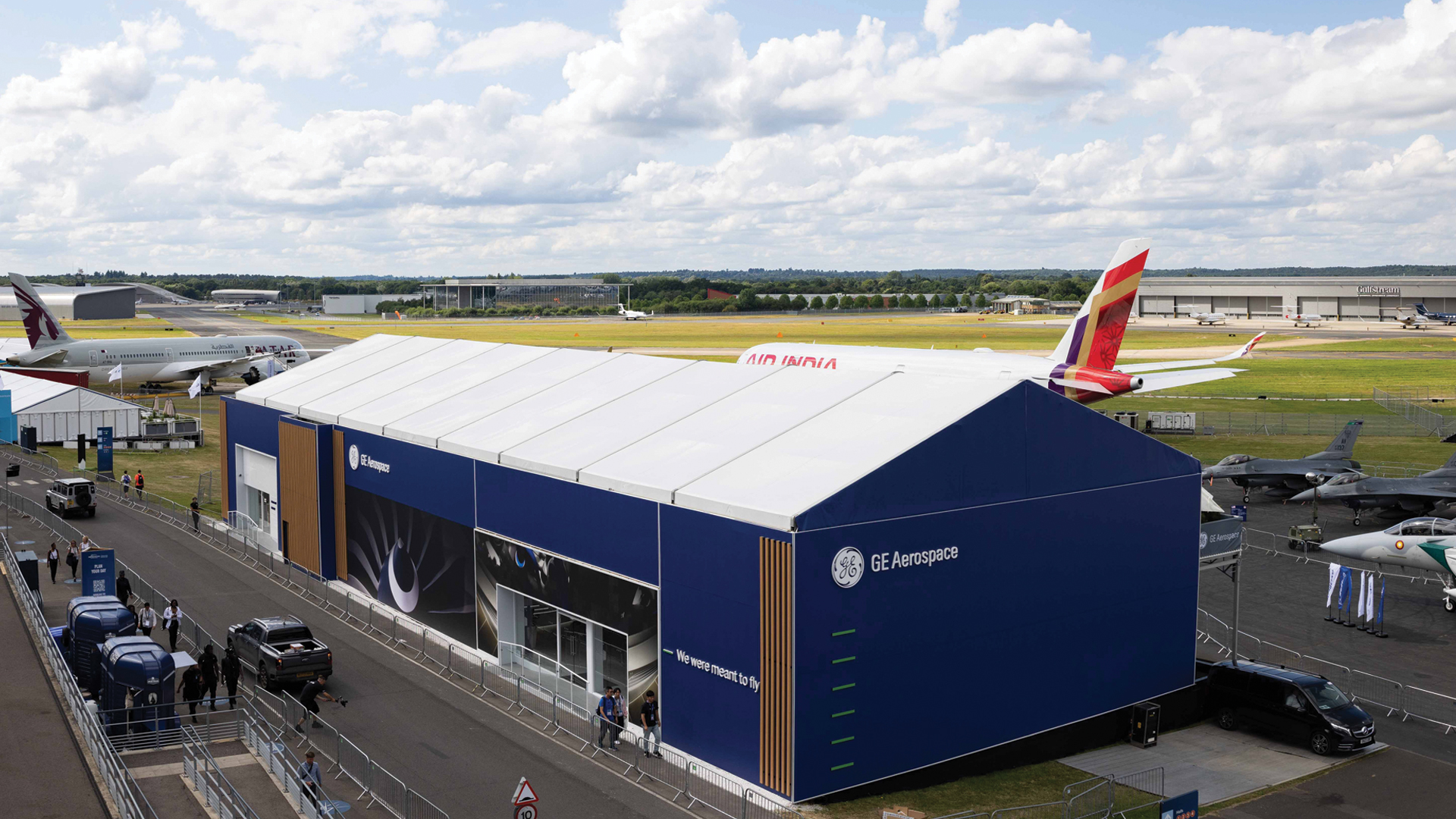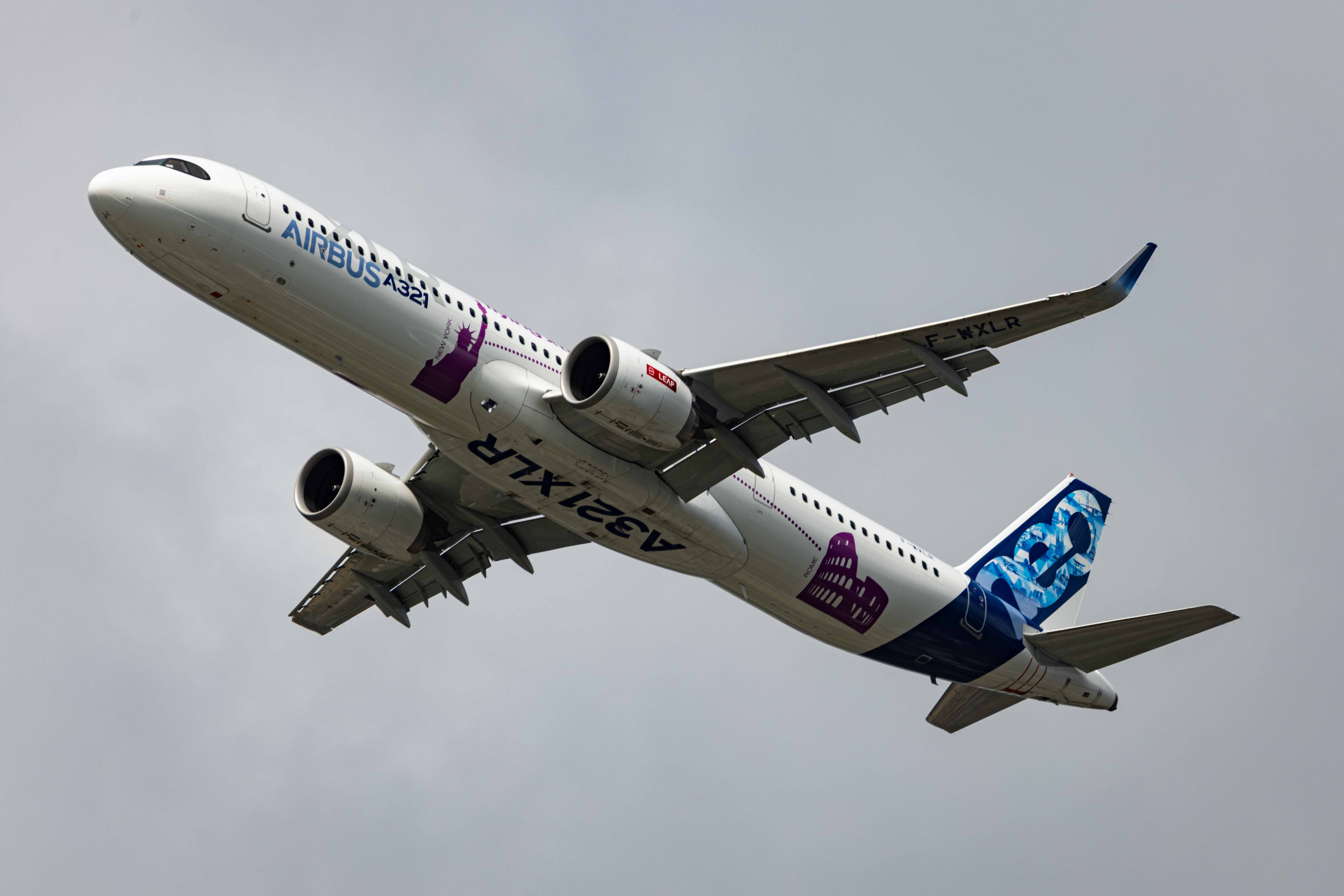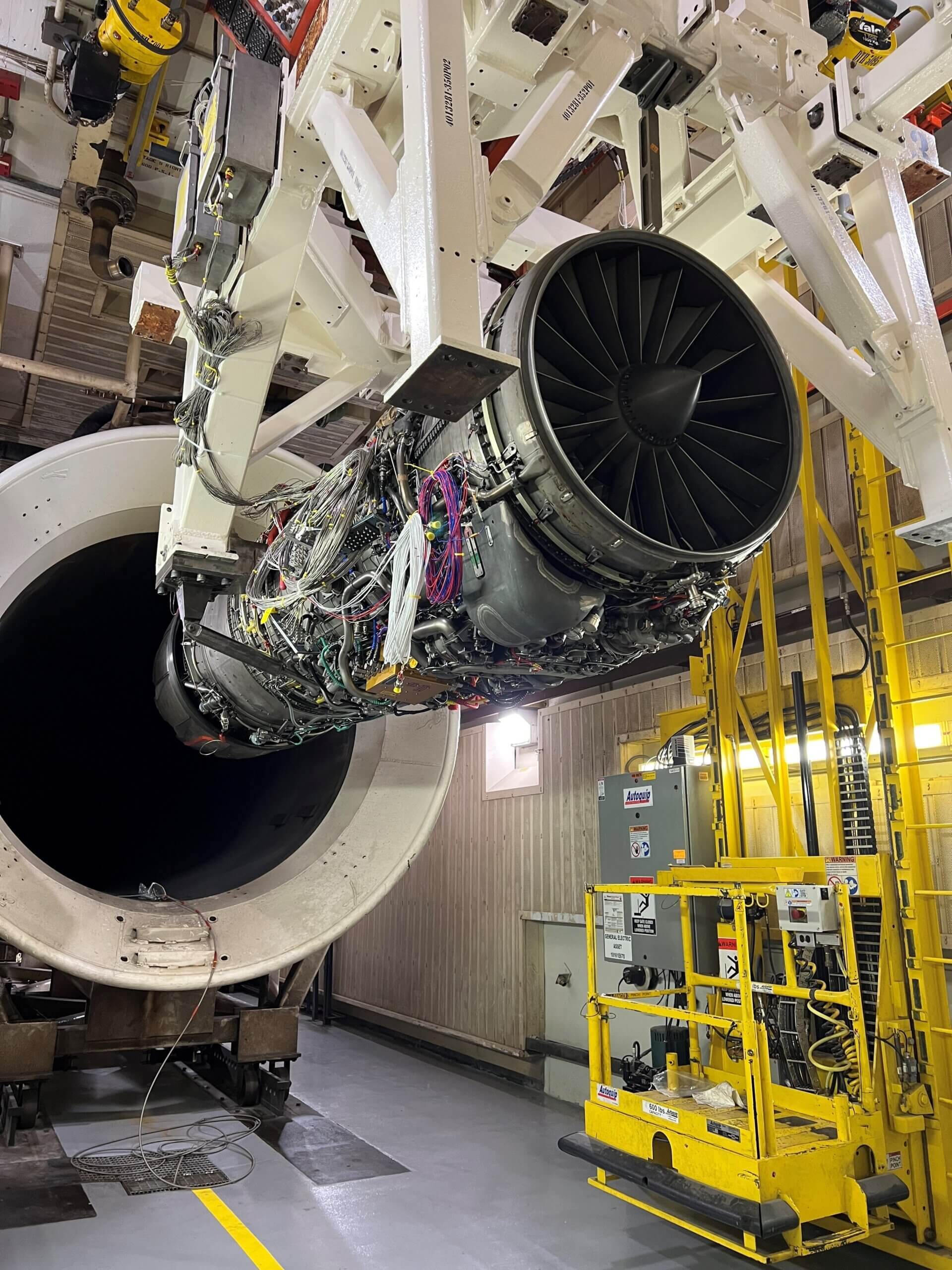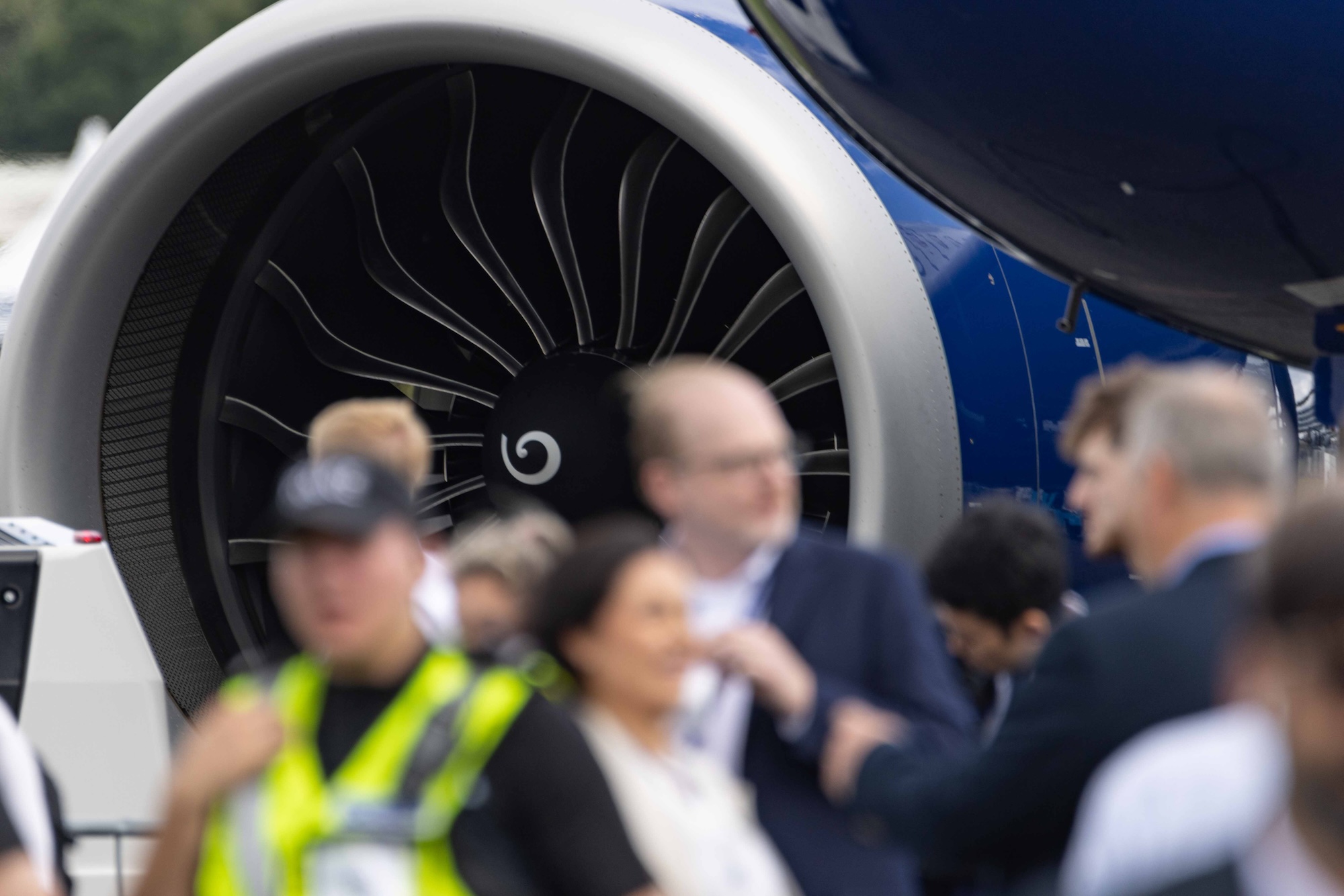GE Aerospace Wraps Up Successful Week at 2024 Farnborough Airshow with New Innovations, Engine Deals, and a Big Investment in MRO
July 31, 2024 | by Jay Stowe
The Farnborough International Airshow near London is a biennial event that attracts airline companies, engine makers, and suppliers from across the broad spectrum of the aviation industry. This year, for the first time, GE Aerospace attended as a standalone company, an important milestone for the company and the industry it serves.
Naturally, it was a moment that GE Aerospace was eager to celebrate. “We are proud to return to Farnborough as a pure-play aerospace company, well positioned to define flight for today, tomorrow, and the future,” Larry Culp, chairman and CEO of GE Aerospace, noted on day two of the show, which ran from July 22 to 26. “It has been another energizing day of listening, learning, and celebrating the industry with our customers, suppliers, and employees. This is a critical moment for us to come together and focus on key issues, including how we can better work together on safety, quality, and delivery, as well as looking to the future to address sustainability with innovative technology.”
Here are some highlights from the air show.
Investing in the MRO Network
GE Aerospace kicked off the air show with a major announcement: It will invest more than $1 billion in its maintenance, repair, and overhaul (MRO) facilities around the world over the next five years, creating capacity to meet growth in both the widebody and narrowbody installed base by adding additional engine test cells and equipment. The funding will add cutting-edge technology, including enhanced inspection techniques, to reduce turnaround times for customers as well as expand component repair capability within its overhaul shops.

CFM International, a 50-50 joint company between GE Aerospace and Safran Aircraft Engines, is progressing with a similar MRO ramp-up plan. Safran announced that it is investing to grow its global overhaul and repair network for CFM LEAP engines, which power Boeing 737 and Airbus A320 family aircraft.
GE Aerospace also announced a number of new service contracts and extensions, among them: an extension of the current services agreement with TUI Airline, as well as a new TrueChoice Service agreement that covers MRO services for TUI’s GEnx-powered Boeing 787 commercial fleet; and a six-year extension of the TrueChoice Service with Thai Airways, covering MRO services for the airline’s GE90-powered Boeing 777 commercial fleet. (All TrueChoice offerings are supported by GE Aerospace data analytics capabilities and experience to help reduce maintenance burden and service disruptions.) In addition, GE Aerospace and the HAECO Group extended the GE Branded Services Agreement and Offload Agreement for GE90 engines through 2040, established a 15-year material service agreement for GE90 engines, and signed a memorandum of understanding securing HAECO’s position in the MRO global network for the GE9X engine.
Widebody Momentum
The market for widebody planes has continued to gain momentum. The week before Farnborough, GE Aerospace announced that the first GE9X production engine had been shipped from its engine testing facility in Peebles, Ohio, to Boeing, where it will power the new Boeing 777X commercial jet. In related news, earlier in July, Boeing began a series of flight tests with the U.S. Federal Aviation Administration, a process known as “type inspection authorization” or TIA, to ultimately get the 777X aircraft certified for passenger service.

GE Aerospace announced a number of deals with its widebody customers. On the second day of the airshow, Qatar Airways added 20 Boeing 777-9 jets to its existing order of 40 Boeing 777-9 commercial aircraft; that expansion includes a commitment to 40 additional GE9X engines and spares, along with a long-term service agreement.
The GE90 engine line, which has seen more than 3,000 engines delivered to customers since its launch in 1990, continued its successful run: National Airlines signed a sales agreement for eight GE90-110B engines to power four Boeing 777F cargo planes, and Turkish Airlines signed a combined engine sales and TrueChoice Flight Hour agreement for eight GE90-110B engines to power four Turkish Cargo Boeing 777 freighters.
Demand for the GEnx, the fastest-selling high-thrust engine in GE Aerospace history, was also up. Japan Airlines placed an order for 40 GEnx-1B engines to power 20 new Boeing 787-9 Dreamliner aircraft. EVA Air ordered eight GEnx-1Bs to equip four Boeing 787-10 Dreamliner aircraft, and signed a TrueChoice contract that covers MRO services for 30 787 Dreamliner aircraft. And International Airlines Group committed to purchase 12 GEnx-1B engines to power six new 787 Dreamliner aircraft for British Airways.
Narrowbody Growth
The commitment to narrowbody engines also continues to grow, with orders for the CFM LEAP engine moving at a steady clip. Avolon, a leading global aviation finance company, placed an order for 150 LEAP-1A engines to power 75 new Airbus A320neo aircraft, as well as purchase rights for 150 more LEAP-1A engines. Avolon also signed an agreement to implement GE Aerospace’s Asset Transfer System (ATS), a records management solution that helps airlines, lessors, and MRO operators manage aircraft and engine maintenance records more efficiently.

Two other aircraft leasing companies also ordered LEAP engines: Nordic Aviation Capital announced a deal to acquire 10 LEAP-1A engines to power five A321neo aircraft, with options for two additional LEAP-powered A321neo jets, and Macquarie AirFinance finalized an agreement for 40 LEAP-1B engines to power 20 new Boeing 737 MAX aircraft it purchased at Farnborough.
In the regional and business jet arena, GE Aerospace announced that American Airlines finalized an order for 180 CF34-8E engines (plus spares) to power its fleet of 90 new Embraer E175 regional jets. “The CF34 engine has a long track record of success with American Airlines and we’re grateful the American team is putting its trust in us again,” said Russell Stokes, president and CEO of commercial engines and services.
Strengthening Defense
During the show, GE Aerospace’s Defense & Systems division signed a memorandum of understanding with Kratos Turbine Technologies, a division of Kratos Defense & Security Solutions Inc., to partner on the development and production of “small, affordable engines” for unmanned aerial systems (UAS), collaborative combat aircraft, and similar applications. Kratos — which has more than 20 years’ experience developing and producing jet engines for UAS, drones, and missiles — and GE Aerospace have been working together on a small, affordable engine over the past year. The engine has performed well in ground tests, with altitude testing set to happen next year at GE Aerospace’s test cell in Evendale, Ohio. “Our defense customers have a growing interest in small, affordable engines to meet their evolving mission requirements,” said Amy Gowder, president and CEO of Defense & Systems. “Our initial collaboration has been very successful, and this agreement furthers our efforts in this new dynamic military segment.”

Innovating the Way to Fewer Emissions
In addition to all the dealmaking, the company took advantage of its time at Farnborough to provide customers, suppliers, and the media with updates on the innovative technology it’s developing to make air travel more sustainable. CFM International announced that the Revolutionary Innovation for Sustainable Engines (RISE) program has so far completed more than 250 tests on its way to full-scale tests of its Open Fan engine architecture. “The work happening today on test rigs and with research partners around the world represents an unprecedented level of new technology development in CFM’s history,” said Gaël Méheust, president and CEO of CFM International.

Both of CFM’s parent companies are heavily involved in research on the CFM RISE program. Safran Aircraft Engines has partnered with the French aerospace research agency ONERA to test the aerodynamic and acoustic performance of the Open Fan design. More than 200 hours of wind tunnel tests have been conducted using a 1:5 scale model of an Open Fan. And GE Aerospace was recently awarded a contract with NASA to advance next-generation compressor, combustor, and high-pressure turbine technologies through a compact core demonstration engine. The aim is to advance material capabilities and understand how new engine designs like the Open Fan impact CO2 and non-CO2 emissions. “To change the future of flight and make it more sustainable, we have to change the aircraft engine,” said Mohamed Ali, senior vice president of engineering for GE Aerospace.
To that end, GE Aerospace announced that it had reached a new cooperative research and development agreement on supercomputing with the U.S. Department of Energy’s Oak Ridge National Laboratory (ORNL). Through the agreement, the two will collaborate on developing new, state-of-the-art computational modeling and simulation capabilities. ORNL operates the world’s fastest supercomputer, Frontier, which is capable of crunching data at exascale speed, or more than a quintillion calculations per second.
“Supercomputing and access to Frontier is changing the way we design jet engines, allowing us to solve previously impossible problems,” said Ali. “We’re now able to digitally fly components of an Open Fan at full scale in a simulated environment before the hardware is built.”





